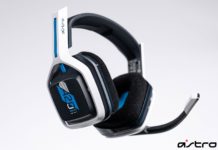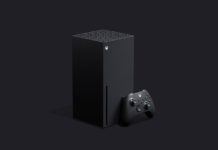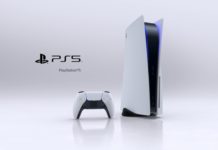Innovation is hard to come by. While new
consoles must be credited with the few innovations that have arrived (Grand
Theft Auto III wouldn’t have been possible on a console before PlayStation
2), the majority of games only benefit from increased realism. Even Nintendo
Wii, which has led to advancements with Mario and Metroid and innovations
with Wii Sports and Wii Fit, is typically reduced to a console that makes
tired gaming experiences shakable.
This makes a game like Ninja Gaiden: Dragon
Sword doubly sweet. First it’s a solid action game that re-creates the
console experience for unrelenting bliss. Second, and more significantly,
Dragon Sword is a game that couldn’t have been made for any system except
the Nintendo DS. Its controls were built around the DS’s touch mechanics in
the same way Nintendo reinvigorated the Legend of Zelda series last fall.
But it does not feel like a Zelda game, or like any other touch-based title
you’ve ever played. This is pure action, pure excitement – 100% pure Ninja
Gaiden.

A Ninja With Stylus
Factory workers aren’t the only ones lining
up at the unemployment office – just last week I spotted console and
handheld D-pads begging for work. The DS D-pad was at the head of the line
shouting, "I work just as hard as the touch screen! Honest!"
In Dragon Sword, you won’t use the D-pad or
face buttons for anything except blocking. All attacks and character
movement is performed with the touch screen. You can use a stylus but a
thumb works just as well, thanks entirely to the game’s ultra-intuitive
controls. Movement is the same as Zelda: touch the screen and Ryu will run
in that direction. Jumping is as easy as a quick upward scratch; to attack
from the air, scratch left or right for a flying strike, or scratch down to
slam straight down. Ninja stars and arrows are fired by tapping (not
scratching) any part of the screen. Basic, combo-friendly attacks are
executed with a simple scratch over the foe’s body. Repeat the scratch (lift
your finger or stylus every time) to slash your enemy to death. Once a
special scroll has been acquired, keep your stylus planted while scratching
and Ryu will perform a multi-hit, multi-enemy projectile assault.
This gameplay style is not only fun and
polished (in two words: near-flawless), but it also changes the way
you’ll look at Ninja Gaiden. Underneath the controls is a bit of an Onimusha
knock-off. But it comes off as something far greater than a clone – all
things likely, most gamers won’t make the connection. They’ll be too busy
fighting the hordes of ninjas and monstrous bosses to think about anything
else.

Your Princess is in Another Dungeon
I must admit that I don’t remember much about
the past Ninja Gaiden storylines. I love the series for its gameplay, not
the character interactions. That said, Dragon Sword’s story presentation is
stellar. In between lengthy bouts of gameplay, the game intersperses short
bits of graphic novel beauty. The artwork is gorgeous and serves as an
excellent substitute for CG or anime clips.
As Ryu, you will be expected to prevent the
Dragon Stones – small fragments of evil power – from falling into the wrong
hands. His main mission, however, is to save Momiji, a young woman being
held captive by the game’s most vicious monsters.
These goals will take you across 13 chapters
of aggressive enemy slaughtering. The battle starts at home but quickly
escalates to the netherworld, linking Ryu with several locations outside the
bounds of the city. In addition to the main quest, you may also enter
additional battles in the netherworld. These take place on one small dungeon
platform where as many as four enemies attack simultaneously. Dozens must be
defeated before these missions are through. If you’re a fan of Onimusha, the
comparison here will be impossible to avoid – Capcom’s series had the exact
same thing several years ago. But it’s entertaining, challenging, and gives
you the chance to obtain additional bits of Essence.

Soul Reaver and Achiever
In the world of Ninja Gaiden, Essence energy
balls – which are dropped by slaughtered enemies – work exactly the same as
the soul acquisition in Onimusha and Devil May Cry. Yellow is the color
you’ll see most frequently; its Essence is the same as cash. Use it to buy
sword and health upgrades, and to acquire special attacks via Technique and
Ninpo scrolls. Blue Essence replenishes health, and Red Essence replenishes
your Ninpo attack energy.
Ninpo moves fall under the "Art of" attack
lineup. The Art of the Piercing Void scroll temporarily allows you to kill
enemies by tapping them. The Art of the Inferno creates a fireball that you
can guide across the screen with your stylus. The Art of the Hurricane does
the same thing but with the power of wind. There are seven of these in all,
including one that harnesses the power of ice and another that uses
electricity.
Each Ninpo is useful in battle but may also
have an effect on the level. Early on in the game you’ll have to light a few
torches with The Art of the Inferno; shortly afterwards you’ll be taking out
flames with The Art of the Hurricane.
Somebody Call Human Resources, This Boss is
Killing Me!
An ugly, over-sized beast is waiting to
attack at the end of every stage. Visually, their variety is quite extreme –
you’ll battle dragons, deformed dinosaurs, a two-legged monster with spider
claws, and several other oddities you won’t find in any other game.
Physically, however, their challenge only
appears to be extreme. Bosses have the power to kill in just a few blows.
But their defeat is usually caused by one defensive tactic: learn their
attack patterns, dodge them, and attack. The first few bosses can be handled
pretty quickly. Run up, slash the beast a dozen times and you’re done. The
latter group of bosses won’t allow such an easy attack to occur. Come close
and they’ll bite Ryu in half; run away and they’ll fire projectile attacks.
What to do? Dodge all attacks and retaliate with the strongest projectile
currently in your arsenal (ninja stars or regular/explosive arrows). Like
the Xbox edition, endurance is vital to your success.

Uhh, Done Already?
Innovation often comes at a price: game
length. Dragon Sword’s bosses are challenging and the whole game is high on
replay value. But it won’t take you much more than a day to finish.
If length comes first to you, this might be
best suited as a rental (assuming it’s available). For the rest of us, the
replay value is more than enough to substantiate its status as a must-own
release.
|
Review Scoring Details for Ninja Gaiden: Dragon Sword |
Gameplay: 8
An innovative and razor-sharp, action-packed adventure. The controls are
seamless – every aspect is just right. You’ll pick up this game and feel like
you’ve been playing it for years.
Graphics: 8.2
Impeccable animations and top-notch pre-rendered backgrounds make Ninja
Gaiden one of the best-looking handheld games.
Sound: 7.9
Dragon Sword goes for the same kind of epic, movie-style soundtrack that can
be found in other action titles. It’s enjoyable but doesn’t have the memorable
qualities of the NES version.
Difficulty: Medium/Hard
Will cause you to scream and pound on something hard (hopefully not your
DS!), but doesn’t quite reach the level of excruciating.
Concept: 8.5
Structurally, Ninja Gaiden: Dragon Sword is a clone of Onimusha. Yeah, this
series began first on the NES, but it didn’t go 3D until long after the release
of Onimusha and Devil May Cry. Dragon Sword breaks new ground – and will hold a
special place in gamers’ hearts – for its incredible touch controls.
Multiplayer: N/A
You can upload your high scores, but…who cares?
Overall: 8.5
A must-own masterpiece; Tecmo’s best since Ninja Gaiden hit the Xbox.









